![]()
![]()
![]()
Use LEFT and RIGHT arrow keys to navigate between flashcards;
Use UP and DOWN arrow keys to flip the card;
H to show hint;
A reads text to speech;
54 Cards in this Set
- Front
- Back
|
Qualitative knowledge of perceived bitterness uses the following descriptors: |
Low, moderate, pronounced, assertive, or highly assertive. |
|
|
Qualitative knowledge of color uses the following: |
Straw, gold, Amber, Brown, or black. |
|
|
Qualitative knowledge of alcohol content uses the following descriptors: |
Lower (<4.4%), normal (4.5%-5.9), elevated (6%-7.4), high (7.5%-9.9), very high (10%). |
|
|
What are the three quantitative parameters of beer character? |
Alcohol content, international bitterness units (IBU), SRM color (Standard Reference Method) |
|
|
How is alcohol content measured? (Two ways) |
By volume (used on most labeling) By weight (a lower value for the same alcohol content since alcohol is less dense than water) |
|
|
What are the five qualitative parameters of beer character? |
Aroma, flavor, after taste, mouthfeel, perceived bitterness. |
|
|
What does PB, C, & ABV stand for? |
Perceived Bitterness, Color, Alcohol By Volume. |
|
|
Name the four German / Czech styles of lagers. |
Pale, Amber, Dark, and Strong. |
|
|
Name the two German/Czech styles of ales. |
Wheat and rye beers. |
|
|
German pilsner: Region, yeast classification, style, example of, PB, C, ABV. |

German/Czech Lager Pale Bitburger PB= Assertive C=Straw to gold ABV= Normal (4.5%-5.9%)
Crisp, clean, refreshing beer that prominently features a noble German hop bitterness. |
|
|
Oktoberfest: Region, yeast classification, style, example of, PB, C, ABV. |
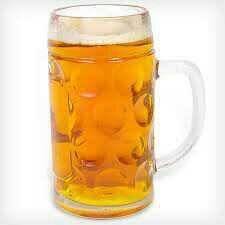
German/Czech Lager Amber Sam Adam's Oktoberfest PB= moderate C= gold to amber ABV= normal (4.5%-5.9%)
Smooth, clean, and rather rich, with a depth of malt character. This is one of the classic malty styles with a maltiness that is often described as soft, complex, and elegant but never cloying. |
|
|
Bohmeian Pilsner: Region, yeast classification, style, example of, PB, C, ABV. |
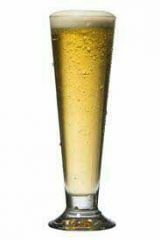
German/Czech Lagger Pale Pilsner Urquel PB= pronounced C= Gold ABV= Normal (4.5%-5.9%)
Crisp, complex and well-rounded yet refreshing. |
|
|
Hefeweizen/Weizen/Weiss: Region, yeast classification, style, example of, PB, C, ABV. |
German/Czech Ale Wheat/Rye PB= low C= light gold to light amber ABV= Normal (4.5%-5.9%) A pale, spicy, fruity, refreshing wheat-based ale |
|
|
Rhine Valley Ales: Region, yeast classification, style, example of, PB, C, ABV. |
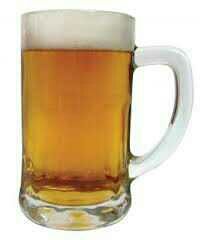
German/Czech Ale Kolsch PB= moderate C= straw to light gold ABV= normal (4.5%-5.9%)
A clean, crisp, delicately balanced beer usually with very subtle fruit flavors and aromas. ( a hybrid beer using ale yeast fermented at cooler water temperatures subdued maltiness throughout leads to a pleasantly refreshing Tang in the finish.
Ex: Goose Island Summertime |
|
|
Double/Double: Region, yeast classification, style, example of, PB, C, ABV. |
Belgian/French Ale Trappist and Abey Ales PB= low C= amber to brown ABV= elevated (6%-7.4%)
A deep reddish moderately strong, malty, complex Belgian ale. Example: Chimay Red |
|
|
Munich Dunkel: Region, yeast classification, style, example of, PB, C, ABV. |
German/Czech Lager Dark Ayinger Altbairisch Dunkel PB=moderate C= amber to brown ABV=normal (4.5%-5.9%) Characterized by depth and complexity of Munich malt and the accompanying melanoidins. Rich Munich flavors, but not as intense as a bock or a roasted schwarzbier. |
|
|
Tripple/Tripple: Region, yeast classification, style, PB, C, ABV. |
Belgian/French Ale Trappist and Abbey Ales PB=moderate C= gold ABV= High (7.5%-9.9%) Originally popularized by the Trappist monastery at West Mall. High in alcohol but does not taste strongly of alcohol. The best examples are sneaky not obvious. |
|
|
Types of spontaneous fermented beers and their style |
Gueuze and Kreik
Belgian and french style |
|
|
Gueuze: PB, C, ABV |
PB= low C= gold ABV= normal (4.5%-5.9%) to elevated (6%-7.4%)
Note: Belgian/French style. Fermented with wild yeast.
Complex, pleasantly sour / acidic, balanced, pale, wheat based ale fermented buy a variety of Belgian microbiota. Example: Lindemans Gueuze Cuvée René |
|
|
Kriek, framboise and other fruit lambics: PB, C, ABV.
Extra: what fruits are added to Kriek and framboise? |
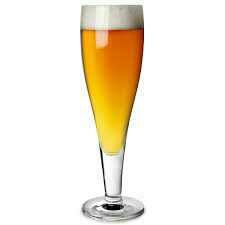
P=low C= varies with fruit ABV= normal (4.5%-5.9%) to elevated (6%-7.4%)
Both are types of lambic - complex, fruity, pleasantly sour / acidic, balance, pale, wheat bass ale fermented buy a variety of Belgian microbiota
Cherries are added to Kriek, raspberries are added to Framboise. |
|
|
Flanders ales: region, yeast type, style, PB, C, ABV. |
Belgian/French Ale Red PB=low C= red brown ABV=normal (4.5%-5.9%) to elevated (6%-7.4%) A complex, sour red wine like Belgian style ale. Example Duchesse de Bourgogne. |
|
|
Saison: region, style, PB, C, ABV |
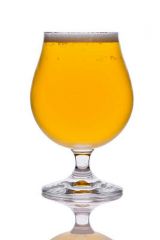
Belgian/French Farmhouse beer PB moderate C gold to light amber ABV high (7.5%-9.9%) to very high (10+%)
A refreshing, medium to strong fruity / spicy ale with a distinctive yellow orange color, highly carbonated, well hopped and dry with a quenching acidity.
Example: IV Saison |
|
|
Whitbier/white: region, style, PB, C, ABV |
Belgian/French Farmhouse beer PB low C straw made white by Haze ABV normal (4.5%-5.9%) A refreshing, elegant, tastey, moderate strength wheat based ale. Example: Hoegaarden |
|
|
Blonde ale: region, yeast type, PB, C, ABV |
BelgianAle PB low C gold ABV elevated (6%-7.4%)
A modern strength golden ale that has subtle Belgian complexity, slightly sweet flavor, and dry finish. Example: Leffe blonde |
|
|
Belgian Golden Strong Ale: region, style, yeast type, PB, C, ABV |
Belgian Strong Ale PB moderate C gold ABV high(7.5%-9.9%) to very high(10+%)
A golden, complex, ever vesente, strong belgian-style ale. Example: Duvel (these beers often have names associated with the devil to pay homage to Duval which is the original Belgian golden strong ale) |
|
|
Name the four different types of English ales. |
Pale Ale, dark ale, Scottish ale, Irish ale. |
|
|
Name the four types of English pale ales. |
Special, best, premium bitter and brittish IPA. |
|
|
Special/Best/Premium pale ale: PB, C, ABV |

PB pronounced C gold to amber ABV lower(< 4.4%)
A flavorful, yet refreshing, session beer. Some examples can still be more malt balanced, but this should not override the overall bitter impression. Drinkability is a critical component of the style emphasis is still on the bittering Hop Edition as opposed to be aggressive middle and late hopping seen in American ales.
Example: Goose Island honkers |
|
|
English IPA: PB, C, ABV |
PB assertive C gold to amber ABV elevated (6%-7.4%)
A hoppy, moderately strong pale ale that features characteristics consistent with the use of English malt, hops and yeast. Has less hop character and a more pronounced malt flavor than American versions.
Example: Goose Island IPA |
|
|
Name four different types of British dark ales. |
Mild, northern English brown ale, robust Porter, Scottish ale, Irish ale. |
|
|
British style mild dark ale: PB, C, ABV. |

PB low C Amber to brown ABV lower (<4.4%)
A light flavored, malt accented beer that is readily suited to drinking in quantity. Refreshing, yet flavorful. Some versions may seem like lower gravity Brown porters.
(not readily available in the US, occasional brewpub special.) |
|
|
British style northern English brown ale: PB, C, ABV. |

PB moderate C Amber to brown ABV normal (4.5%-5.9%)
Dryer and more hop oriented than southern English brown ale, with a nutty character rather than caramel.
Example: Newcastle Brown Ale |
|
|
British style robust Porter: PB, C, ABV. |

PB pronounced C brown to black ABV normal (4.5%-5.9%) to elevated (6%-7.4%)
A substantial, multi dark ale with the complex and flavorful Row 3 character.
Example: Deschutes Black Butte Porter |
|
|
Sweet/Milk stout: PB, C, ABV. |
PB moderate C black ABV normal (4.5%-5.9%)
A very dark, sweet, full bodied, slightly roasty ale. Often taste like sweet and espresso. Milks out versions are brewed with lactose, and unsermountable sugar.
Example: belching beaver beavers milk Stout |
|
|
Name the two types of Scottish beer |
Scottish ale, Strong Scotch Ale/Wee heavy |
|
|
Scottish ale: PB, C, ABV |
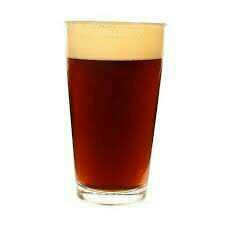
PB low to moderate C light Amber to dark ABV lower(<4.4%) to normal (4.5%-5.9%)
Cleanly malty with a drying finish, perhaps a few esters, and on occasion a faint bit of peaty earthiness (smoke). Most beers finish fairly dry considering their relatively sweet palate, and as such have a different balance than strong Scotch ales.
Example: Belhaven Scottish ale.
(This style is not readily available in most US stores.) |
|
|
Strong Scotch Ale/ Wee Heavy: PB, C, ABV |
PB low C amber to brown ABV lower (<4.4%) to normal (4.5%-5.9%)
Rich, malty and usually sweet, which can be suggestive of dessert. Complex and secondary malt flavors prevent a one-dimensional impression. Strength in maltiness can vary.
Example: AleSmith we heavy. |
|
|
Dry Irish stout: type, PB, C, ABV. |
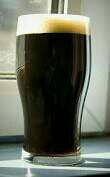
Irish ale PB assertive C black ABV lower (<4.4%) to normal (4.5%-5.9%)
A very dark, roasty, bitter, creamy ale.
Example: Guinness |
|
|
Name the two types of historical American style beers. |
American lager and California common beer |
|
|
American Lager (light, standard, premium are substyles): PB, C, ABV |

PB low C straw, very pale ABV lower(<4.4%) to normal (4.5%-5.9%)
Very refreshing and thirst quenching.
Examples: Bud Light, Pabst Blue Ribbon, Miller Genuine Draft |
|
|
California common beer: PB, C, ABV. Commercial example. |
PB pronounced C light Amber to dark amber ABV normal (4.5%-5.9%) A light fruity beer with firm, grainy maltiness, interesting toasty and caramel flavors and showcasing the signature Northern Brewer varietal hop character.
Example: achor steam |
|
|
American wheat beer: PB, C, ABV |
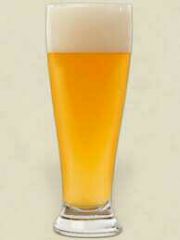
PB moderate C straw to gold ABV normal (4.5%-5.9%)
Refreshing wheat beers that can display more hop character and less yeast character than their German cousins.
Example Widmer Hefenweizen |
|
|
American blonde ale: PB, C, ABV. |
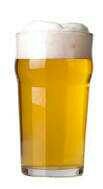
PB moderate C straw to gold ABV lower (<4.4%) to normal(4.5%-5.9%)
Easy drinking, approachable, malt oriented American craft beer.
Example: Redhook blonde. |
|
|
American pale ale: PB, C, ABV. |
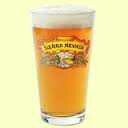
PB pronounced C gold to amber ABV normal (4.5%-5.9%)
Refreshing and hoppy, yet with sufficient supporting malt.
Example: Sierra Nevada Pale Ale |
|
|
American amber ale: PB, C, ABV. |
PB pronounced C amber to dark amber ABV normal (4.5%-5.9%) Like an American pale ale with more body, more caramel richness, and the balance more towards malt then hops although hop rates can be significant. Example: Anderson Valley boont amber ale |
|
|
American brown ale: PB, C, ABV |
PB moderate C light brown to dark brown ABV normal (4.5%-5.9%) Can be considered a bigger, maltier hoppier interpretation of northern English brown ale or a hoppier, less malty Brown Porter, often including the citrus accented hop present that is characteristic of American hop varieties. Example: Lost Coast downtown brown |
|
|
American IPA: PB, C, ABV. |
PB assertive C gold to dark amber ABV elevated (6%-7.4%)
A decidedly hoppy and bitter, moderately strong American pale ale.
Example: Bear Republic racer five and Sierra Nevada celebration. |
|
|
Imperial IPA (IIPA): PB, C, ABV. |
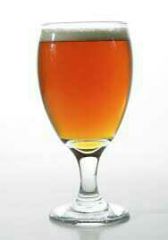
PB highly assertive C dark gold to dark amber ABV high (7.5%-9.9%)
An intensely hoppy, very strong pale ale without the big maltiness and/or deeper malt flavors of an American barley wine. Strongly hopped, but clean, lacking harshness, and a tribute to historical IPAs. Drinkability is an important characteristic; this should not be a heavy sipping beer, it should also not have much residual sweetness or a heavy character grain profile.
Example: green flash Imperial IPA. |
|
|
American stout: PB, C, ABV. |
PB assertive C black ABV normal (4.5%-5.9%) to elevated (6%-7.4%)
A hoppy, bitter, strongly roasted foreign style stout. Example: Sierra Nevada stout |
|
|
Oatmeal stout: PB, C, ABV. |

PB moderate C black ABV normal (4.5%-5.9%)
A very dark, full-bodied, roasty, malty ale with a complementary oatmeal flavor and silky mouthfeel derived from oats.
Example: Sam Smith oatmeal stout (though not American) |
|
|
American Imperial Stout: PB, C, ABV. |
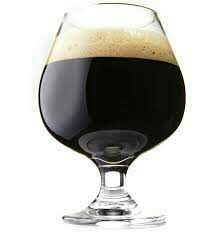
PB pronounced C black ABV high (7.5%-9.9%) to very high (10+%)
An intensely flavored, big, dark ale. Roasty, fruity, and bittersweet, with a notable alcohol presence. Dark fruit flavors meld with roasty, burnt or almost tar like sensations. Like a black barleywine with every dimension of flavor coming into play. Example: Eel River Raven's eye Imperial Stout |
|
|
American barleywine: PB, C, ABV. |
PB assertive C light amber to light brown ABV high (7.5%-9.9%) to very high (10+%) A well hopped American interpretation of the richest and strongest of the English ales. The hop character should be evident throughout, but does not have to be unbalanced. The alcohol strength and hop bitterness often combined to leave a very long finish. Example: Sierra Nevada Bigfoot |
|
|
Maibock: region, yeast type, style, PB, C, ABV |
German/Czeck Lagger Pale PB moderate C gold to light amber ABV elevated (6%-7.4%)
A relatively pale, strong, malty lager beer. Designed to walk a fine line between blandness and too much color. Hop character is generally more apparent than in other bocks.
Example: Gordon Biersch blonde Bock |
|
|
Doppelbock: region, yeast type, style, PB, C, ABV. |
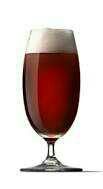
German Lager Strong PB low C gold to brown ABV high (10+%)
A bigger version of either a traditional Bock or a helles bock. Example: Ayinger Celebrator |

